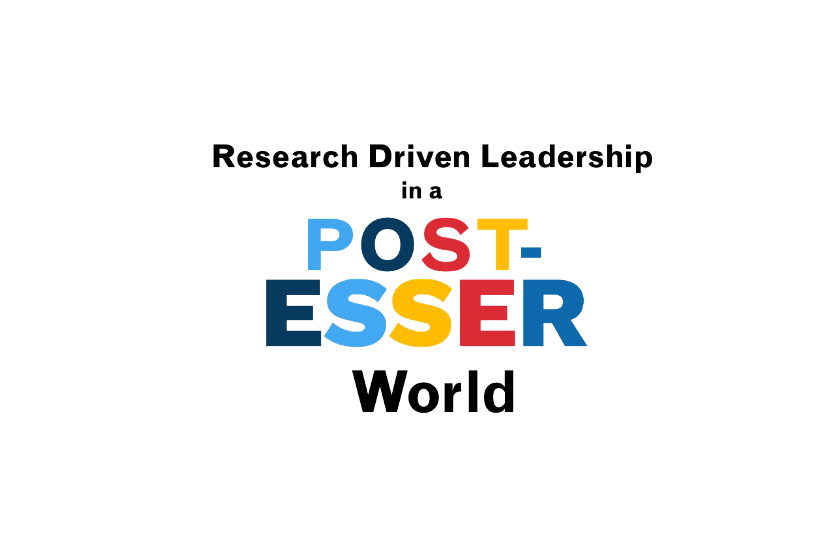Quality Training for Substitute Teachers: How Addressing Quality Can Enhance Staffing Pools

The role of substitute teachers has grown increasingly significant as schools work to provide quality instruction with the growing frequency of teacher absences. Substitute teachers were once viewed as occasional stand-ins, but today, they are essential for educational continuity. Schools face a dual challenge: ensuring there are enough substitutes available, while ensuring students still receive quality instruction during these periods. Interestingly, there may be ways that the push for quality actually increases the staffing pool.
As a point of reference, before the Pandemic, students spent around 10% of instructional time with substitutes—a figure that has since doubled to nearly 20% as districts grapple with persistent teacher shortages The Journalist’s Resource.
This shift raises a vital question: Are today’s substitute teachers adequately prepared to meet classroom demands?
School districts face ongoing challenges in filling substitute positions. By late 2023, 77% of district leaders reported “considerable” difficulty in finding substitutes, and over 93% experienced at least some staffing shortage National Center for Education Statistics.
Many districts have implemented temporary solutions, such as increasing pay, lowering qualification requirements, and recruiting college students and parents K-12 Dive. While these measures help keep classrooms staffed, they often do little to ensure students receive quality instruction while their regular teacher is out.
A well-prepared substitute teacher plays a critical role in maintaining a stable and engaging learning environment. It’s no surprise that poorly managed classrooms often lead to disengaged students, behavioral issues, and lost instructional time. In contrast, capable substitutes uphold lesson continuity, engage students, and foster a positive classroom atmosphere The Thomas B. Fordham Institute.
Unfortunately, substitutes generally lack access to professional development opportunities available to full-time educators, which impacts their effectiveness. While 80% of large districts have raised substitute pay since early 2022, many districts are now recognizing that structured training and certification are essential to improving substitute teaching quality Red Rover.
One effective approach to improving substitute teaching quality is certification. Programs like the The Fundamentals of Substitute Teaching K-12—a certification course offered by TransendED Learning through K12Leaders—equip substitutes with essential skills and strategies for effective classroom management and engagement. Key training areas include:
- Classroom management techniques
- Student engagement strategies
- Adapting to diverse educational environments
“In my years working across various districts, the need for skilled and dependable substitute teachers has been a constant challenge. I’ve seen first-hand how the lack of training and preparedness can impact not just the classroom environment, but student learning as a whole.” say’s Dr. Dawson. “This online pathway for subs introduces essential classroom management skills, engagement strategies, and a clear framework to succeed from day one. This program should both address the staffing gap and raise the bar for what we expect from our subs.”
This certification provides substitutes with comprehensive preparation, building both their skills and confidence, and also coaches them through creating a “survival kit” of resources to help them be ready for any challenges they face in the classroom.
Certification also helps address one of the core issues substitutes face: assignment inconsistency. Districts are more likely to rely on certified substitutes, knowing they meet quality standards required for successful classroom management and instruction. This consistency benefits both substitutes, who gain regular assignments, and students, who receive dependable, quality instruction K-12 Dive.
Certification and training programs can increase a district’s substitute pool by empowering more individuals to consider these roles. Many potential substitutes may be intimidated and hesitate due to a lack of confidence or preparation. With formal training, they gain the knowledge and skills necessary to succeed, making them more likely to enter the classroom as substitutes. Not only does this expand the substitute pool, but it also raises the quality of instruction, as certified substitutes are better equipped to manage classrooms effectively Red Rover.
Investing in substitute teacher certification isn’t merely a temporary fix for staffing shortages; it’s a sustainable strategy for enhancing instructional quality. Certified substitutes do more than just fill a gap. They engage students, follow lesson plans closely, and contribute to a positive learning environment. Districts that prioritize certification set a high standard for substitute teaching, recognizing the long-term value of well-prepared substitutes.
With federal pandemic relief funds winding down, districts increasingly need sustainable solutions for staffing challenges. Certification provides one such solution, transforming substitutes from temporary classroom managers to skilled educators ready to teach whenever needed National Center for Education Statistics.
By reflecting on these questions, district leaders can make informed decisions to enhance substitute teaching programs. Programs like the “Professional Pathway” offer a structured way to improve substitute quality and positively impact student outcomes K-12 Dive.
The demand for substitute teachers remains steady, and the need for quality instruction—whether from a permanent teacher or a substitute—remains essential. Investing in certification helps ensure that every classroom has a teacher prepared to lead.
Districts prioritizing higher standards for substitute teaching should consider easy access certification programs like Dawson’s The Fundamentals of Substitute Teaching K-12 to support both their educators and students. Quality substitutes make a lasting, positive impact, contributing to the stability and effectiveness of our educational systems.
Essential Questions for School Leaders
To assess their substitute staffing and training needs, district leaders can consider the following questions:
- What percentage of instructional time in our district is led by substitute teachers?
- How does the quality of substitute-led instruction compare to that of permanent staff?
- What training and development opportunities are available to substitutes?
- Are substitutes included in our professional development programs, and if not, why?
- What steps ensure that substitutes have the necessary classroom management skills?
- How can we support substitutes in becoming consistent and reliable members of our educational team?
- What long-term benefits could substitute certification bring to our district?







Responses